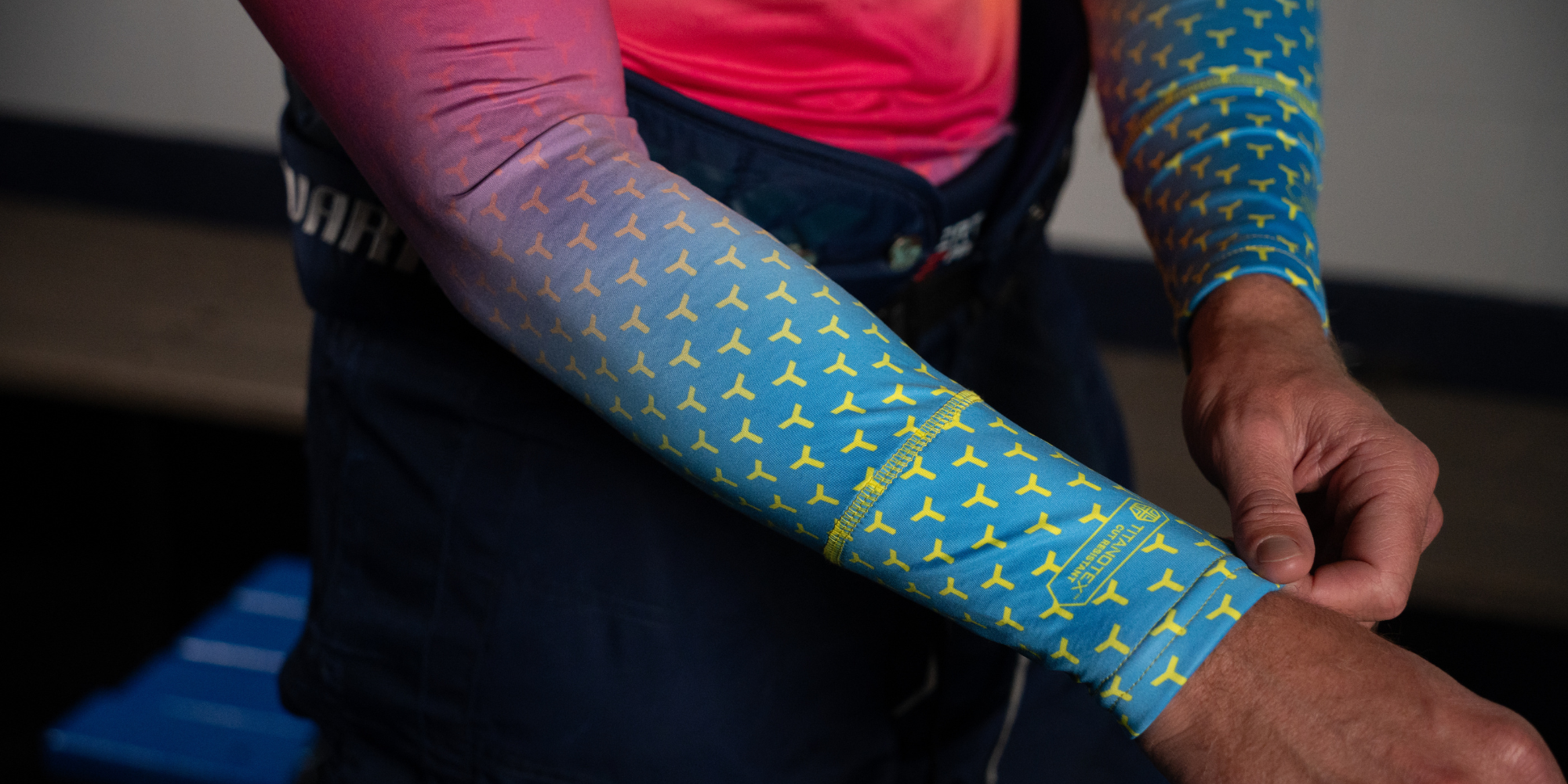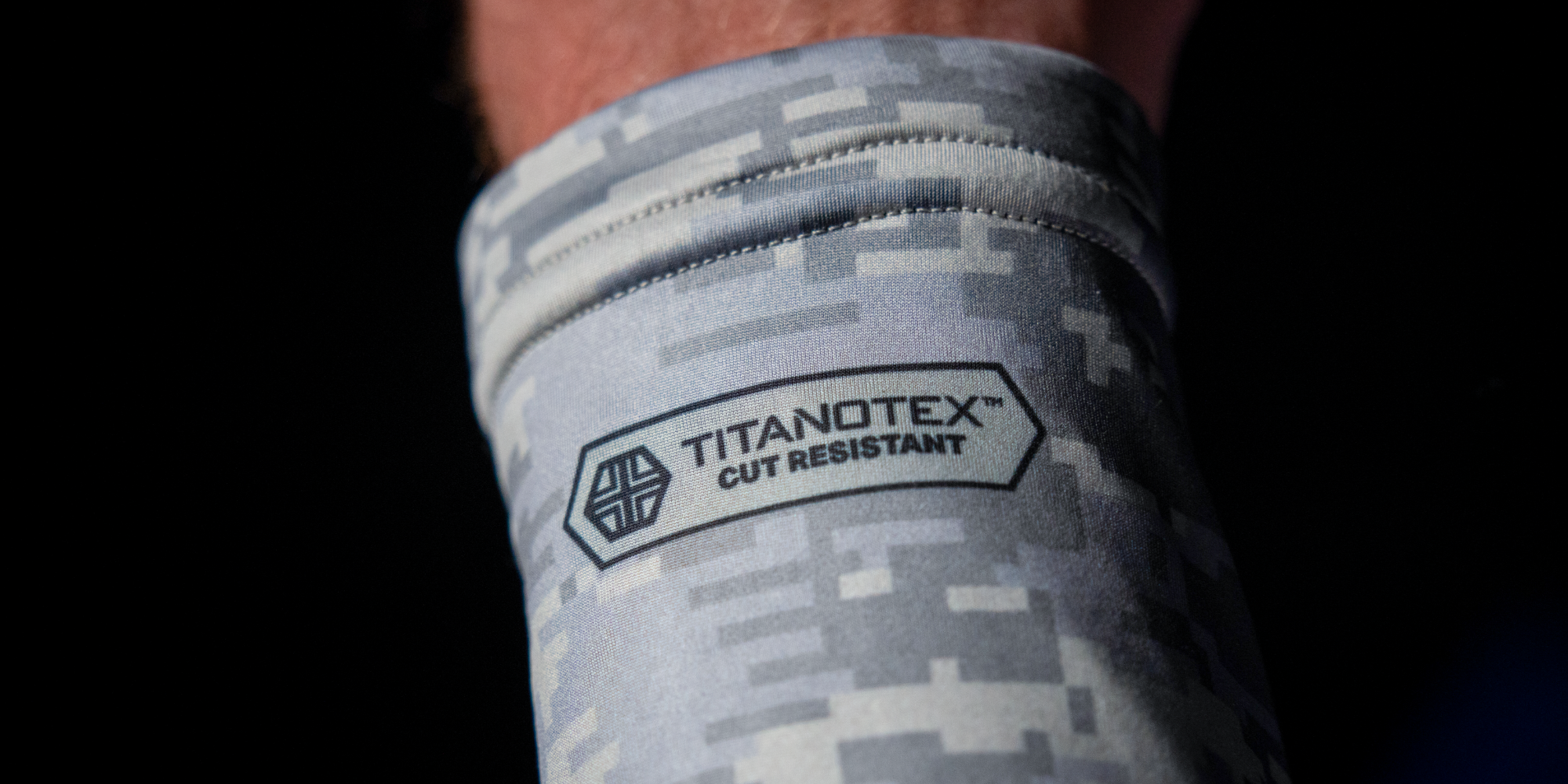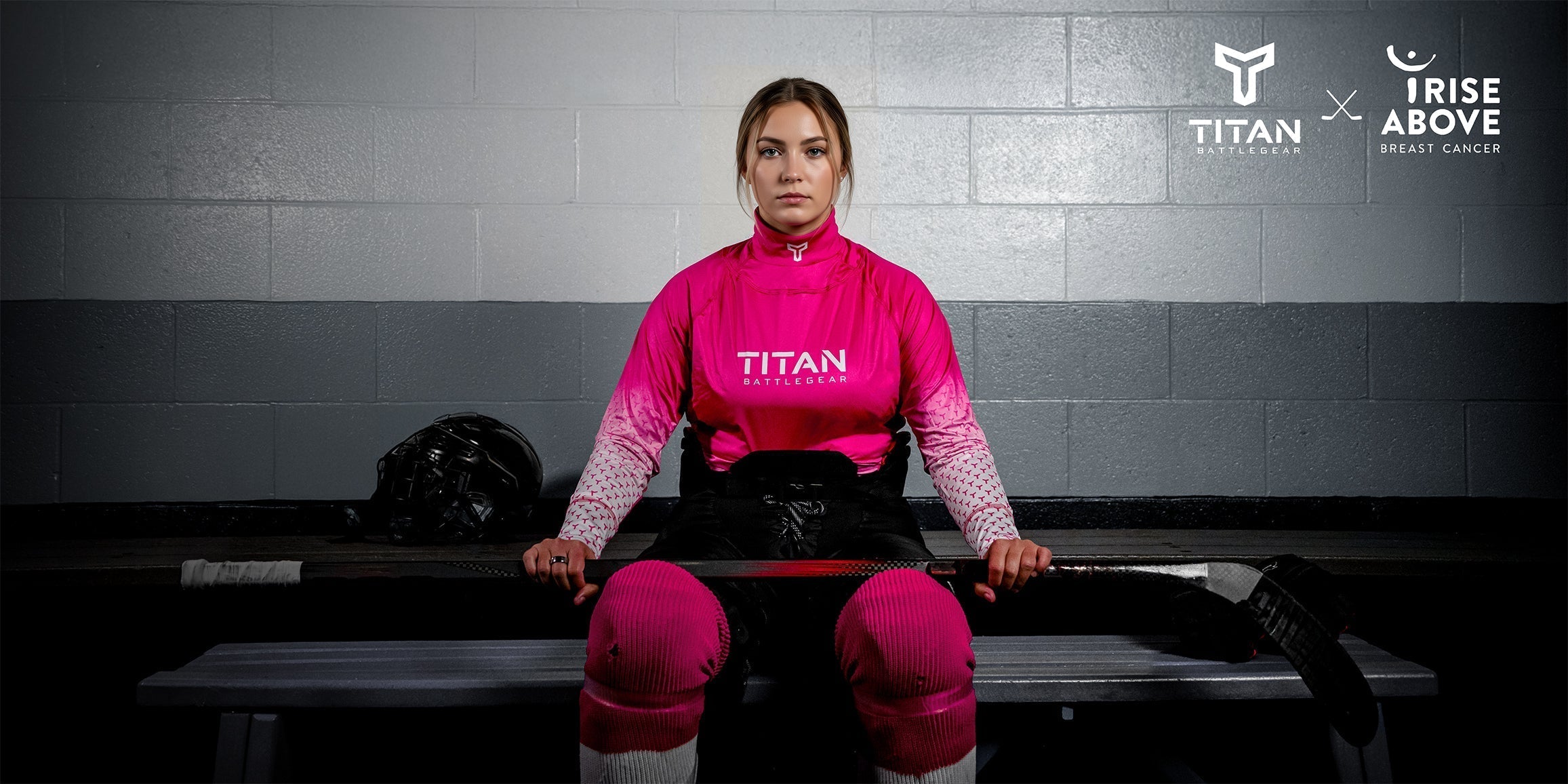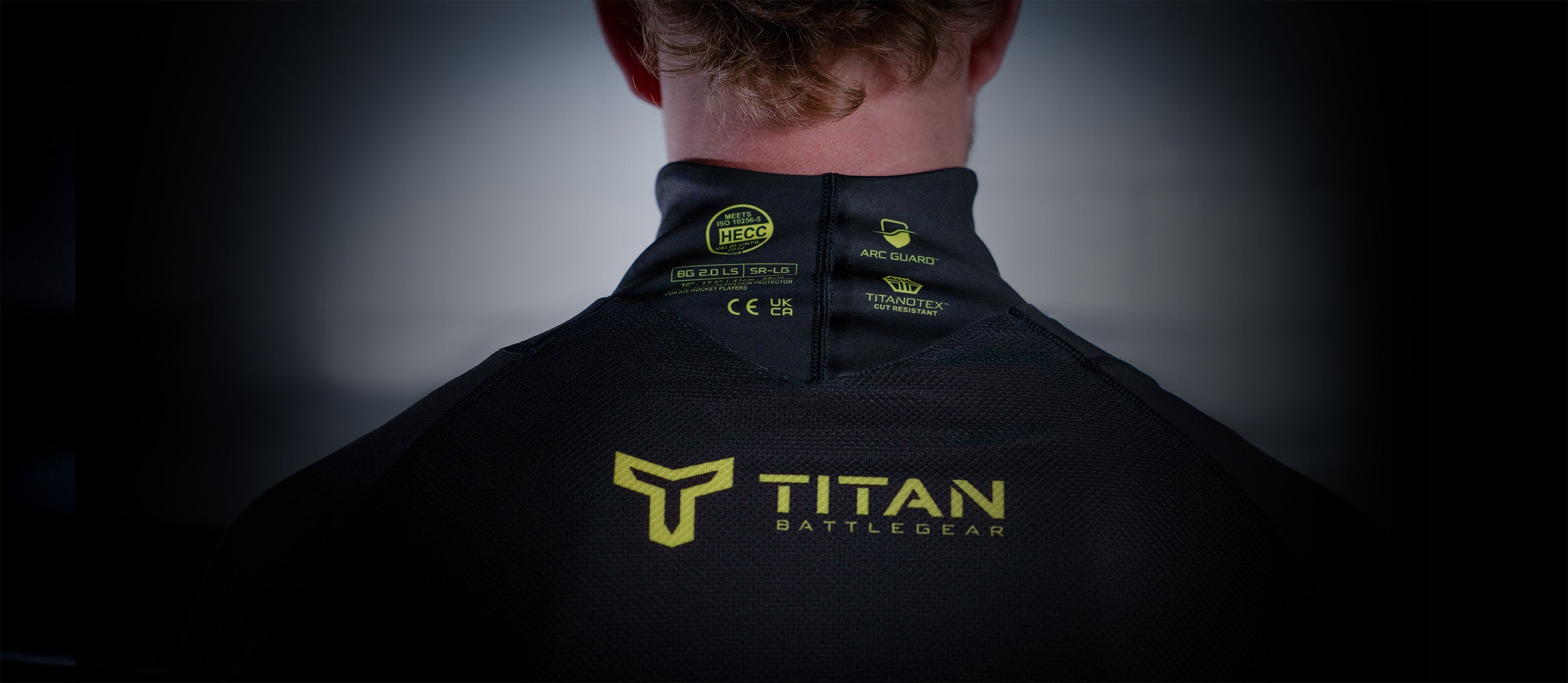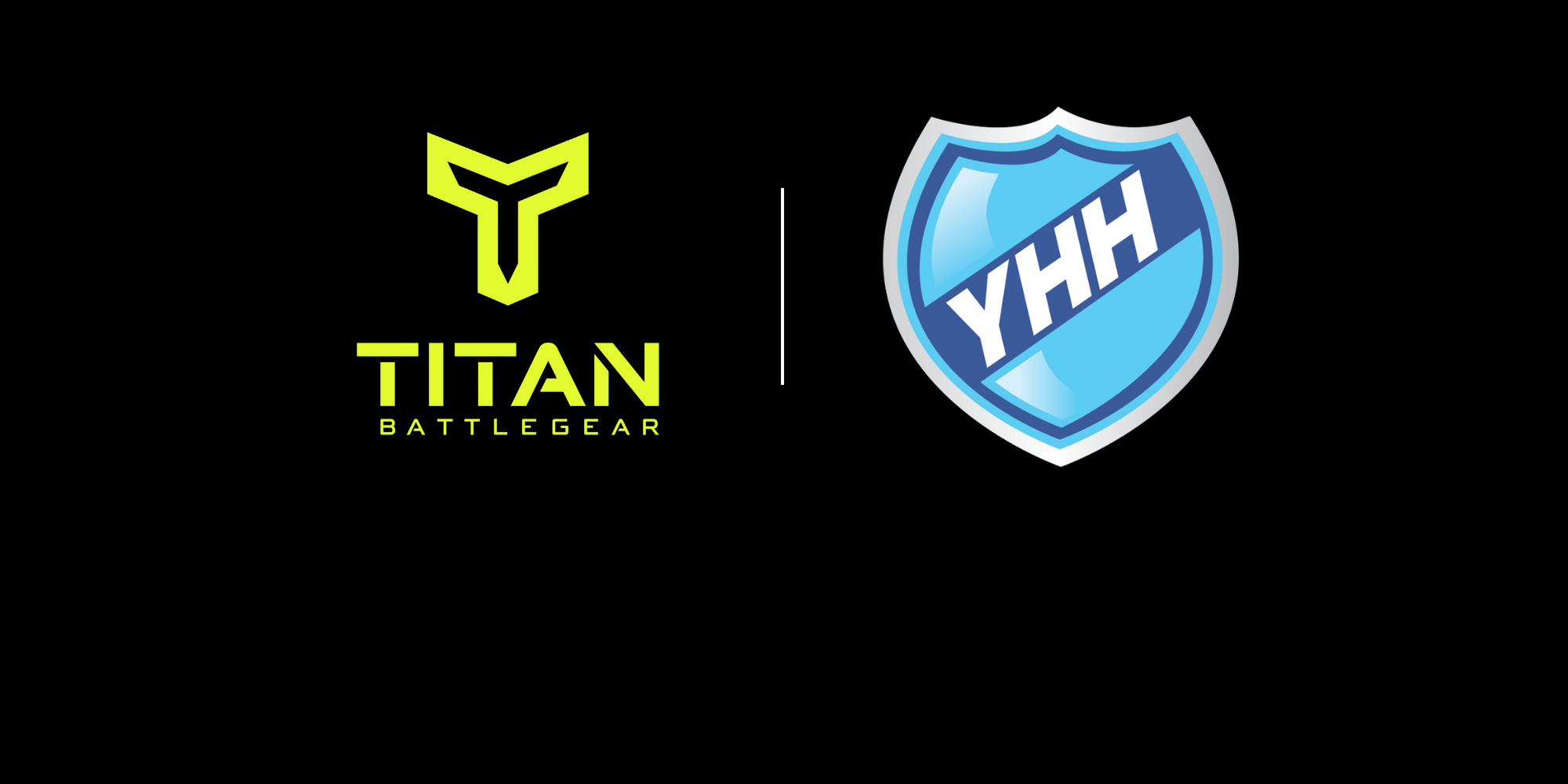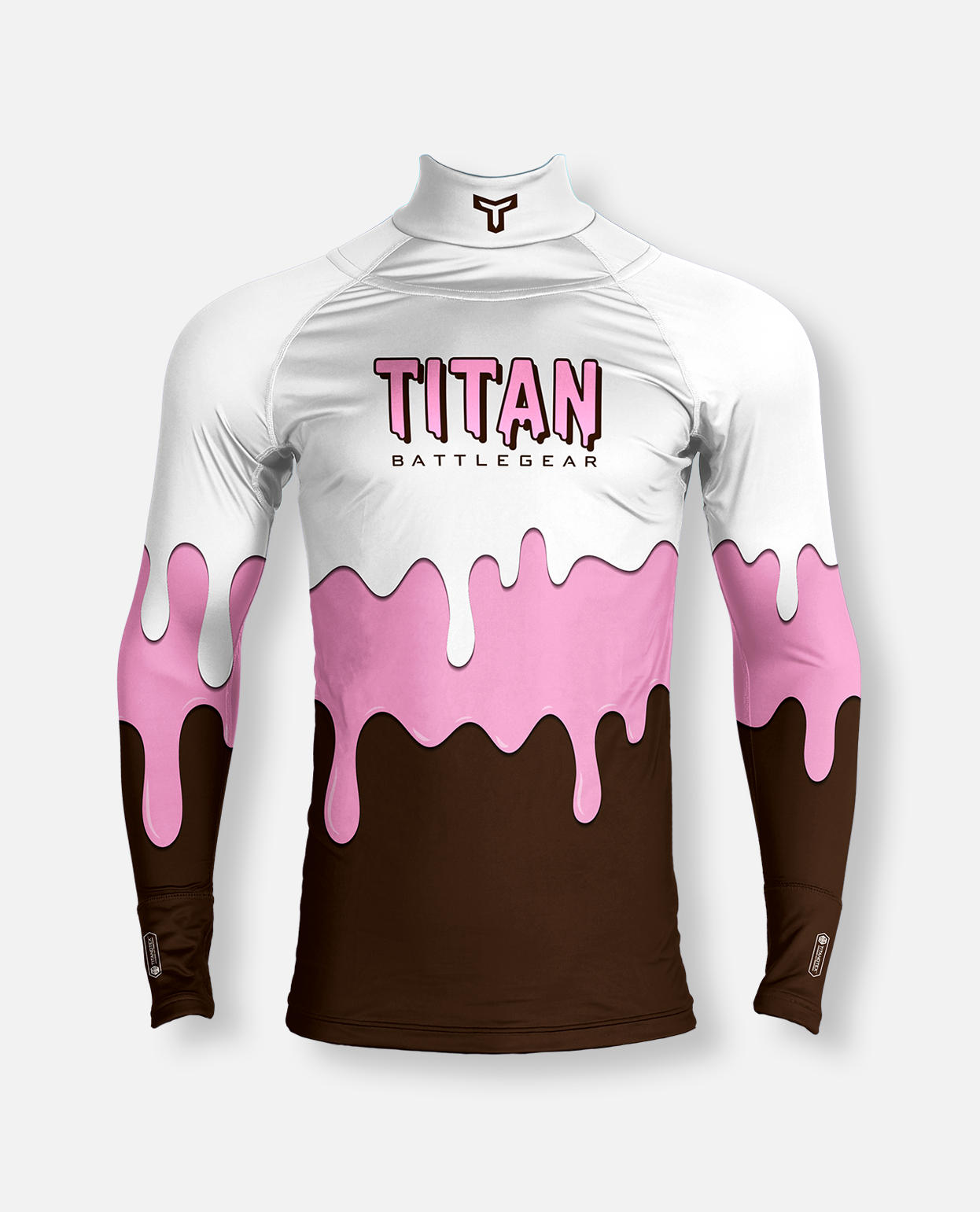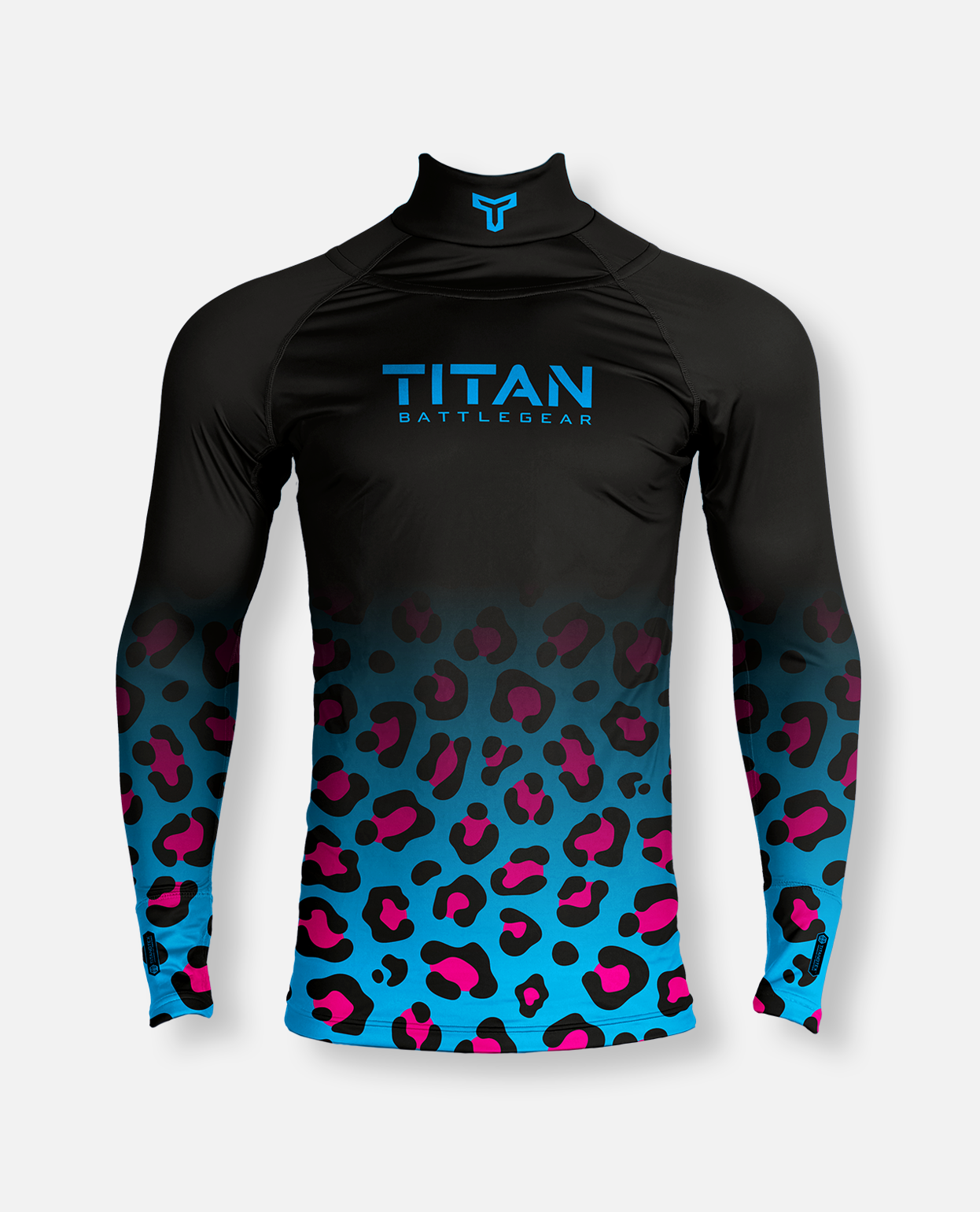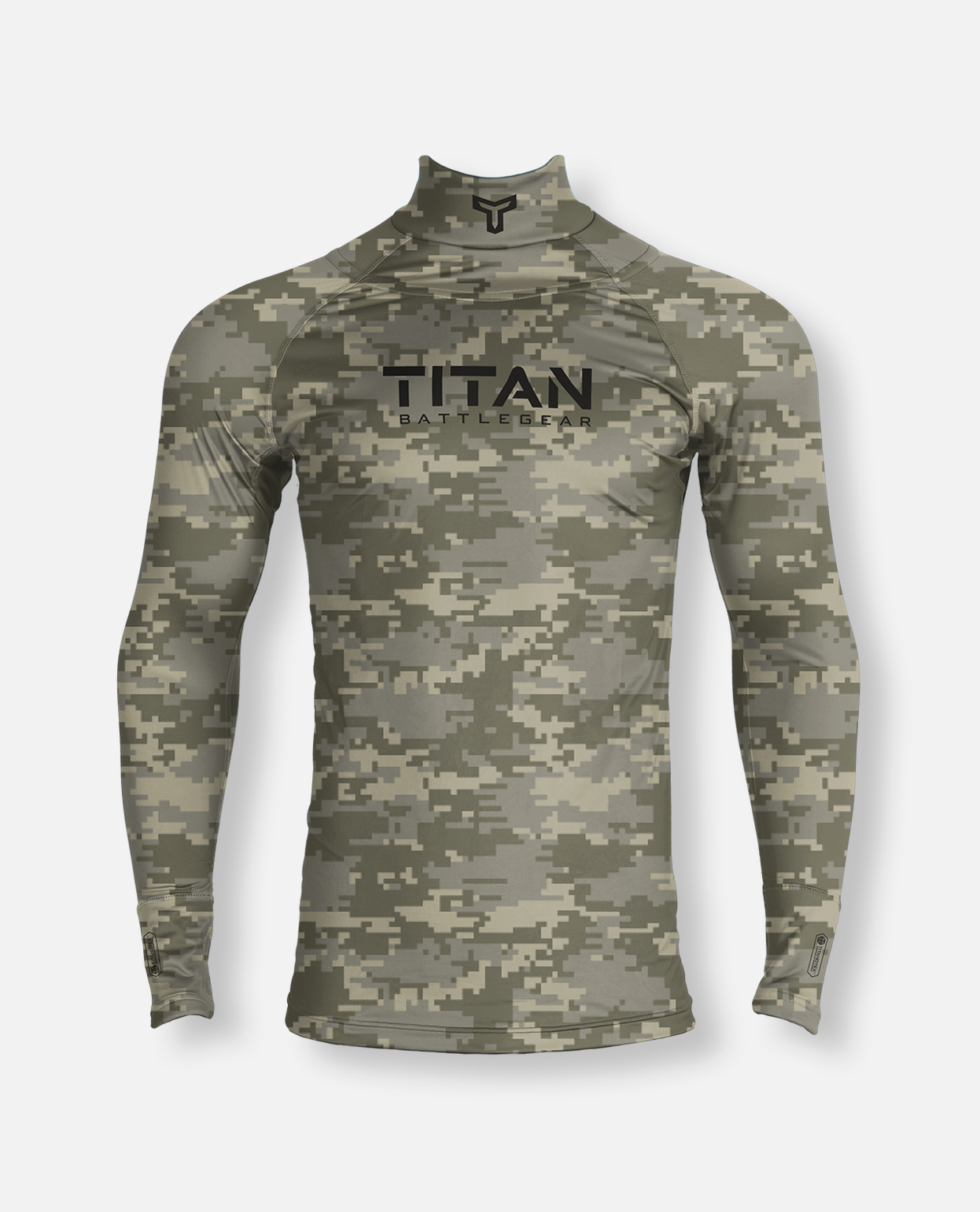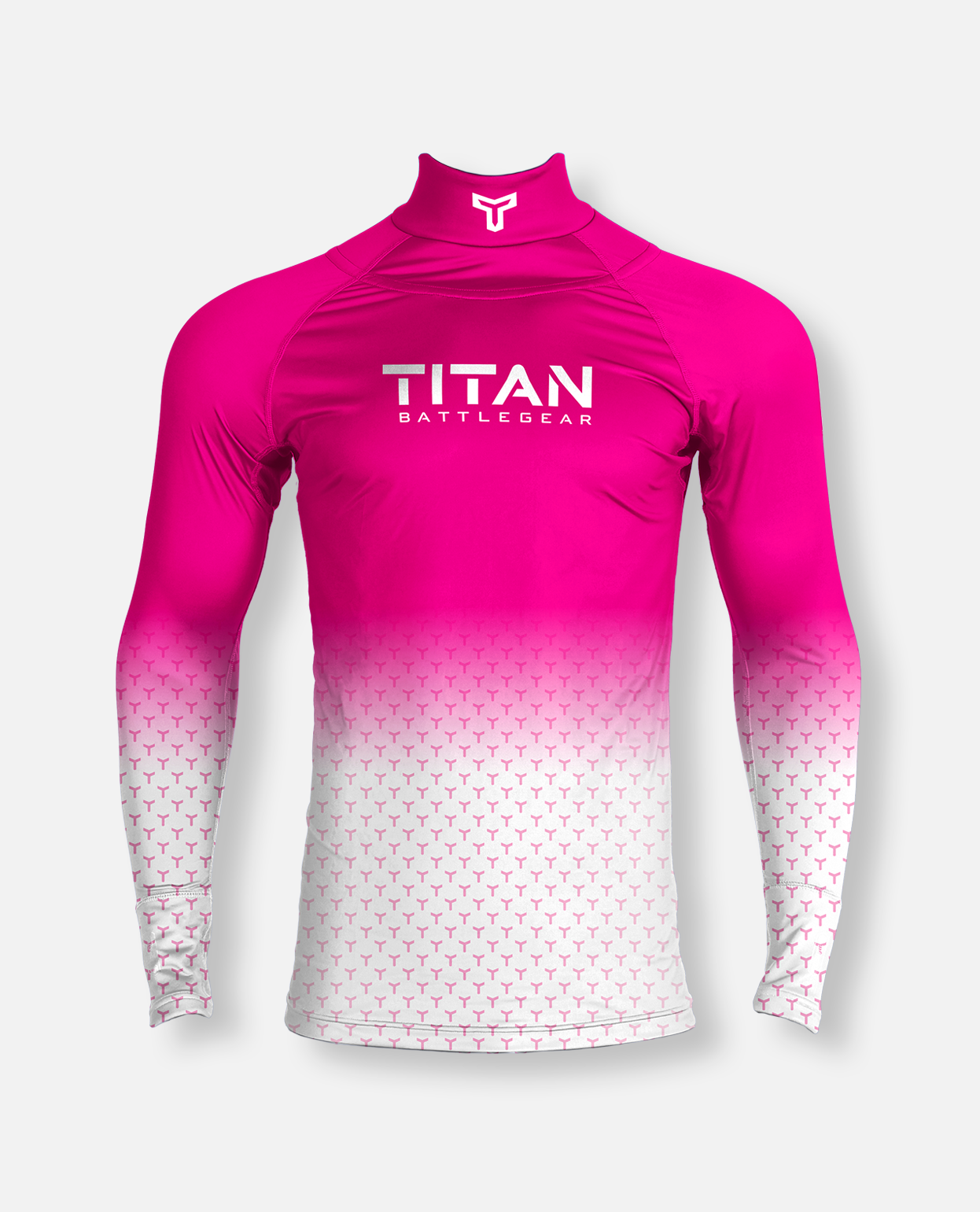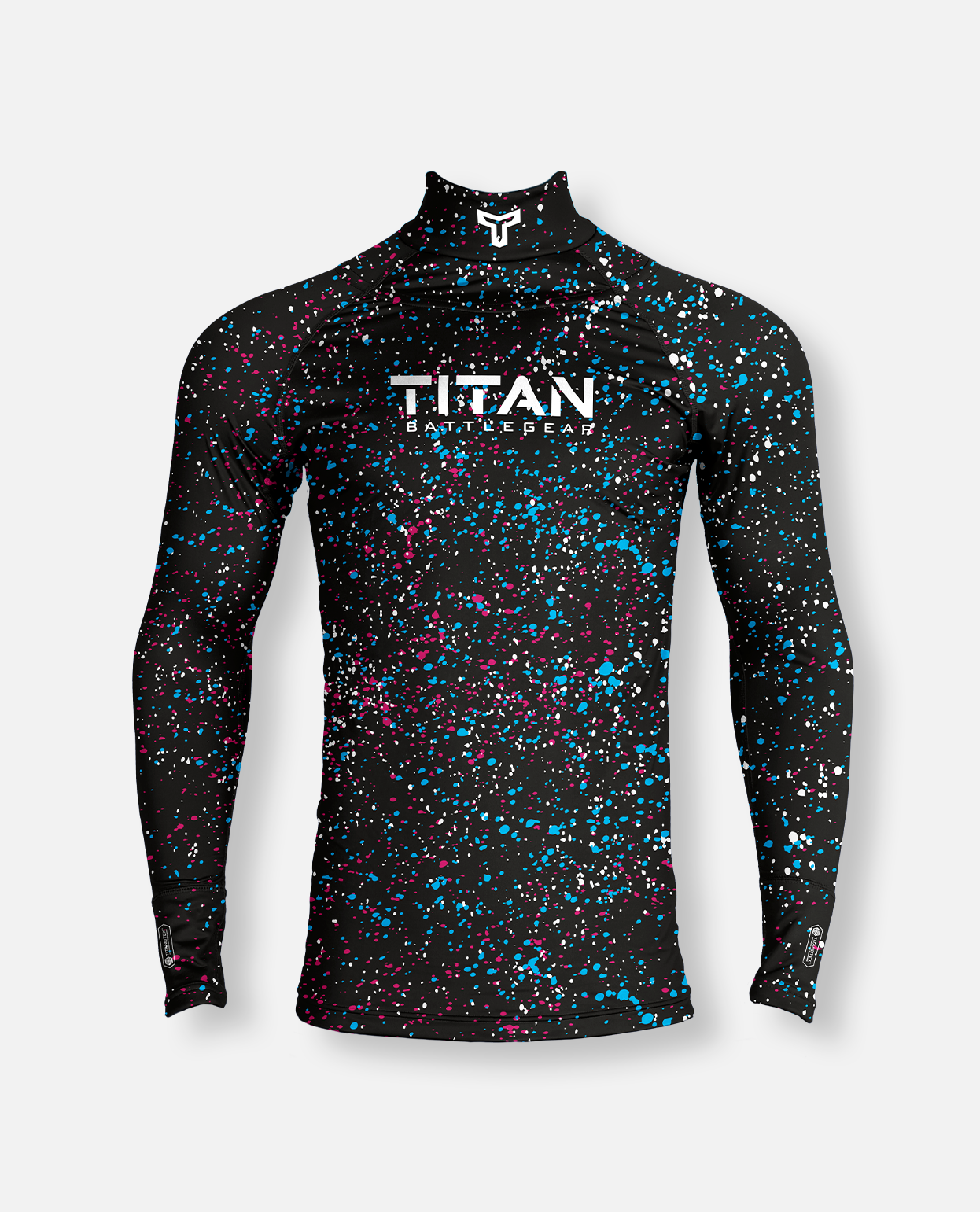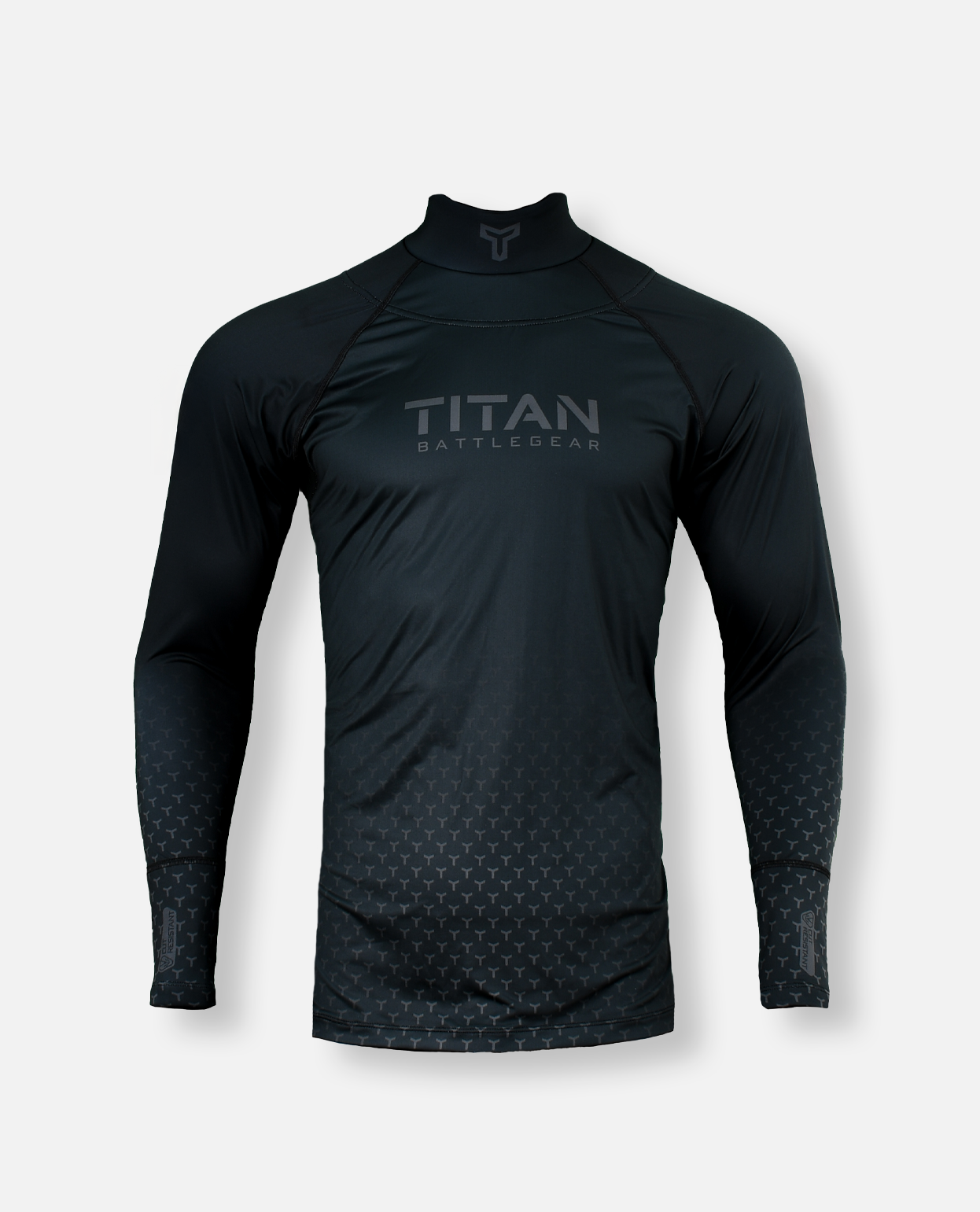If you’re a hockey parent or coach, you’ve probably bought a neck guard and felt like you were “doing the right thing” or “checking the required box.” You picked something that met the safety standard and figured that was enough.
It’s not your fault – but it’s time to talk honestly about what “standard” gear actually protects against, and why it may not be enough.
The hard truth: Many neck guards rated A2 or A3 under the ANSI cut-resistance scale do very little to protect against real skate blade injuries. These products meet compliance requirements, but they weren’t built for the force of an actual skate blade in motion. They were designed to pass a test, not to keep your kid safe under the real conditions of the game.
That’s where ANSI A9 neck protection is different. The rating is more than a number – it’s a measure of real resistance to sharp, high-force cuts. It’s what Titan BattleGear offers, the highest level available, and it’s why we built our neck guard shirts the way we did.
This is not a pitch. It’s a conversation we need to have.
What the ratings actually mean
ANSI ratings were created as a way to measure how well materials can resist sharp cuts. They tested fabrics with a weighted blade and recorded how much pressure it takes to cut through the material. The scale ranges from A1 (very low protection) to A9 (the highest level tested).
Here’s how it breaks down:
-
A2/A3: These protect against light contact or scraping with a dull edge.
-
A6: Offers moderate protection, but can still be penetrated by higher force or a sharp blade.
-
A8/A9: Built for high-force, high-sharpness risks—like skate blades during a fall, pileup, or collision.
If your neck guard is A2 or A3, it might check the box for compliance – but offer very little protection against the kind of injuries we worry about in hockey.
Click to read a more in-depth report on ANSI cut ratings and how they work.
Why standard neck guards don’t measure up
In hockey, blades are sharp, fast, and unpredictable. A player can fall, get tangled up, and a skate can come down faster than anyone can react. The vulnerable areas of the neck include major arteries and veins. A deep cut in one of these areas is an emergency.
Most A2/A3 neck guards use low-cost padding or thin materials that can’t withstand real blade force. They may help with a scrape or bump, but that’s not what most people are worried about when they think about neck protection.
Players and parents deserve more than a false sense of safety. They deserve gear that actually works.
Why Titan built an ANSI A9 neck guard
Titan BattleGear didn’t set out to make “another neck guard.” In fact, it wasn’t started because we wanted to make neck guards at all. It started with a dad trying to protect his son. After witnessing how inadequate most neck guards were (and how easily they failed under real force), Titan’s founder, Andries de Villiers, set out to create something better. Not to start a hockey company, but to solve a real problem. Read Andries’ full story here.
What began as a personal mission became a solution worth sharing.
Here’s what makes our neck guard shirts and neck guards different:
1. Real cut protection
We use Titanotex™ fabric, an A9-rated material engineered to resist real skate blade force. It's lab-tested and designed for the game, not a testing room.
2. Protection that stays put
Instead of straps or loose collars, our protection is integrated directly into a baselayer shirt. This means it moves naturally with the player and stays where it needs to be the entire time. No shifting, no guessing.
3. Built for comfort and wearability
If it’s not comfortable, it won’t get worn. Our shirts are lightweight, moisture-wicking, and built to feel like a regular baselayer.
Why parents are switching
We’ve heard the same concerns from parents and coaches again and again:
“I don’t care about rules – I care about real protection.”
“If a product only meets the minimum, that’s not enough for my kid.”
“I want my child to be confident and protected on the ice."
This isn’t about fear. It’s about being informed.
We know parents often feel like outsiders when they try to make hockey safety decisions. The labels and certifications can be confusing. The performance language doesn’t always match what real players need. That’s why we’re committed to being transparent about what our gear does and how it’s tested.
We won’t overpromise or use scare tactics to sell products. We’ll just tell you the truth:
A0–A3 neck guards don’t protect against the injuries most people are afraid of. A8/A9 does.
If you remember one thing...
Don’t assume all neck guards are the same. The label matters. The rating matters. The materials matter. If you’re trusting safety to a product, it should be one that’s actually built for the job.
Titan BattleGear was created to fill that gap. If you want gear that offers real protection based on real science and real risks, we’re here for you.






